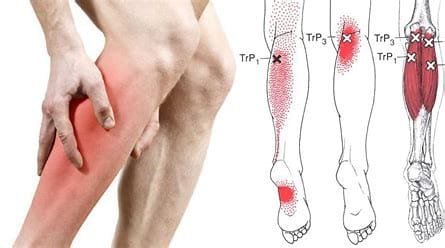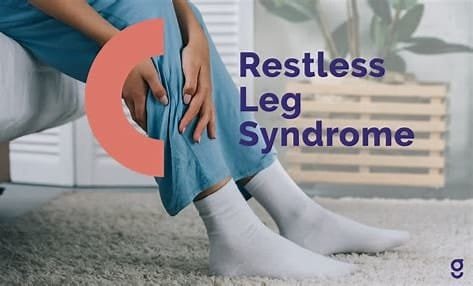Introduction

Restless Legs Syndrome, otherwise known as Willis-Ekbom Disease, is a nervous system disorder characterized by an uncontrollable urge to move one’s legs that often goes with uncomfortable sensations. It is usually experienced during periods of inactivity or rest, such as sitting or lying down. This occurs mostly in the evening or at night. RLS can severely disturb sleep and generally affect quality of life.
Though its precise cause is not well established, various factors contribute to its development. Those are:
Genetic Factors: RLS often tends to run in families and suggests that there is some kind of genetic predisposition involved. There is research going on that suggests the involvement of certain genes, such as those regulating the neurotransmitter dopamine, important in the control of movement.
Dopamine Imbalance: The key cause behind this disorder is the malfunctions in the dopamine-producing and functioning aspects. It is a neurotransmitter that contributes to the process of signals for controlling muscular movements. It may lead to symptoms due to the lack of such neurotransmitter.
Iron deficiency: A brain-iron deficiency intensifies RLS symptoms. Since the element helps in dopamine production, low levels of such an element increase the intensity of severe symptoms.
Other Conditions: Many diseases are associated with RLS, including kidney disease, diabetes, Parkinson’s disease, and peripheral neuropathy. The symptoms of RLS may be improved when these underlying conditions are treated.
Pregnancy: Most women develop RLS during pregnancy, particularly in the third trimester. Changes in hormones and low iron levels during pregnancy are thought to cause the condition.
Medications and Drugs: Antihistaminic, antidepressants, and antipsychotic medication exacerbate symptoms of the disorder. Taking of alcohol, caffeine, and smoking lead to the triggering of this disease.
Symptoms of Restless Legs Syndrome
Commonly, people who experience the symptoms of RLS state that they feel uncomfortable leg sensations. They get the urge to move them, due to which such uneasy sensations arise that are mostly pricking or burning and crawling sensations as well. The key symptoms that come in a list about this disease are given hereunder:
Uncomfortable Feelings: Most of the people suffering from RLS express a feeling that may not easily be described and, yet is uncomfortable, together with a strong urge to move.
Improves with Movement: Pain, at least during the beginning, usually improves upon movement. Most patients experience the pain relieved by a walk or a stretch. It commonly recurs because this improvement is transient.
Worst in the Evening: The symptoms of RLS typically worsen during the evening hours. It consequently creates both problems with sleep onset and with maintenance sleep.
Sleep Disturbances: RLS can cause severe disruption to sleep, leading to excessive daytime fatigue and decreased quality of life.
Periodic Limb Movements: Many patients with RLS suffer from periodic limb movements during sleep, which involve jerks or twitches of the legs.
Treatment of Restless Legs Syndrome

The treatment of RLS is a combination of lifestyle modifications, home remedies, and, in some cases, drugs. Treatment plans depend on the severity of symptoms and underlying causes.
Lifestyle modifications can also help manage symptoms of RLS through maintaining a regular sleep schedule, relaxing techniques, and moderate exercise. Avoidance of caffeine, alcohol, and tobacco may also prove helpful.
Dietary Changes: The best diet that helps with overall health includes high intake of iron, magnesium, and folate, and this will tend to minimize the symptoms of RLS. These are available in leafy greens, legumes, nuts, and whole grains.
Home Remedies: Some patients get relief by using warm baths, massages, or applying heat to the legs. Stretching exercises before sleep also decrease symptoms.
Medications: If lifestyle changes and home remedies do not prove to be effective, then a doctor may prescribe medication. Medications most used for RLS include the following:
Dopamine Agonists: This drug activates dopamine receptors in the body and may even ease symptoms. Some examples are pramipexole and ropinirole.
Iron supplementation: For patients with deficiency, iron supplements may be prescribed to enhance symptoms.
Anticonvulsants: Gabapentin and pregabalin are administered to reduce symptoms, more so if they are overwhelming.
Consult a specialist: An individual experiencing RLS must see a healthcare provider, preferably a neurologist or a sleep specialist, because proper diagnosis and management must take place to treat the disease effectively.
Conclusion:

The complexities of Restless Legs Syndrome greatly affect daily life and are a major disruptor for sleep quality. Learning from the causes, signs and symptoms, and potential helpful treatments can empower those more to take control over it, manage it better, or even eliminate it from being a problem. If the symptoms of RLS prevail in you or anyone that you know, do approach a doctor for treatment guidance and overall well-being.



